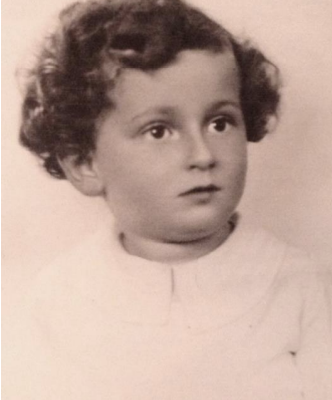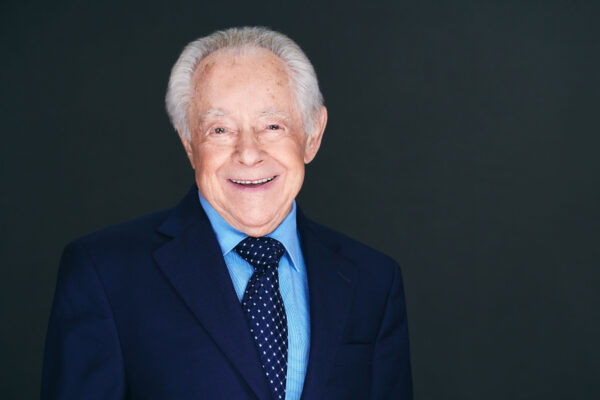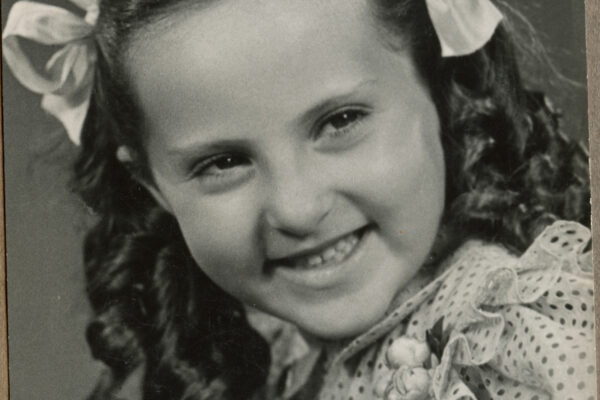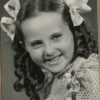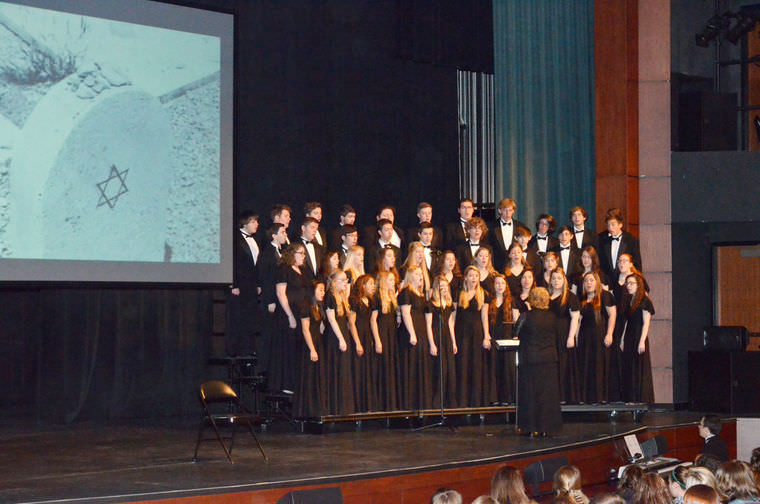
The Greeneville High School Advanced Chorus performs “In Remembrance” for the nearly 1,100 students who attended the East Tennessee Holocaust Education Conference.
Local students got a living history lesson Wednesday when two child survivors of the Holocaust visited Greeneville to share their stories.
Nearly 1,100 middle and high school students from Greeneville, Greene County, Kingsport and Washington County filled the Niswonger Performing Arts Center for the East Tennessee Holocaust Conference, which featured Dr. Inge Auerbacher and Sonja DuBois.
Auerbacher spoke of three years she spent as a child in the Terezin concentration camp, while DuBois shared her experiences as a “hidden child,” having been given to foster parents and unknowingly assuming a new identity at less than 2 years old to avoid Nazi persecution.
Both shared a similar message: Don’t be a bystander when facing prejudice and violence.
“Don’t stand by and do nothing when you see bullying,” Auerbacher said. “That means you’re equally guilty.”
“Bystanders eventually became collaborators” during the Holocaust, DuBois added. “They went with the enemy. And there were a lot of them.”
Noelle Smith, assistant principal at Greeneville High School and Tennessee Holocaust Commission teaching fellow, said the conference was organized to make students aware of the Holocaust and its relevance today.
“This is not an event confined to history. Rather, human rights violations are committed daily in our society or internationally,” she said. “This conference seeks to remind students that prejudice, hatred and violence, manifested in the Holocaust, leads to the destruction of a humane society.”
The event, themed “Remember,” was sponsored by the Tennessee Holocaust Commission, Greeneville City Schools, the Greeneville Goes to Europe tour group that will be visiting Holocaust-related sites later this year and Kaltenmark Embroidery & Screen Printing.
Danielle Kahane-Kaminsky, executive director of the Tennessee Holocaust Commission, introduced the speakers, and students in the GHS Advanced Chorus and Advanced Men’s Chorus performed the solemn songs “Prayer of the Children” and “In Remembrance.”
TEREZIN CAMP SURVIVOR
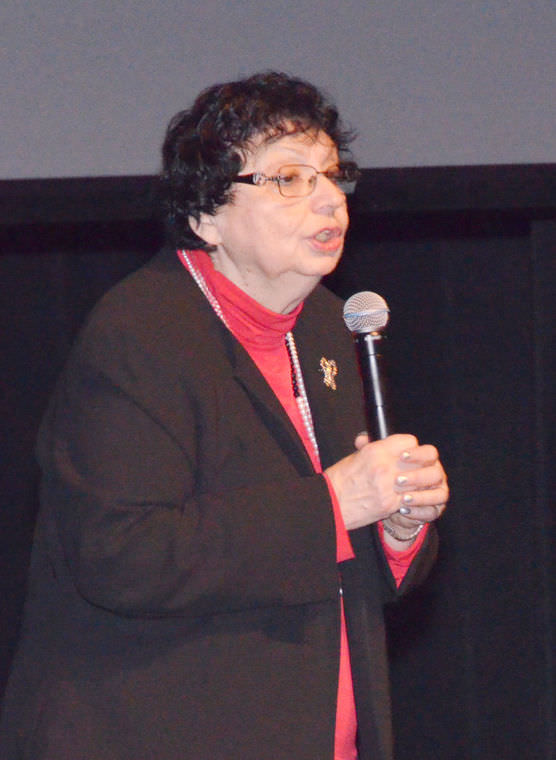
Dr. Inge Auerbacher, who spent three years in the Nazi-run Terezin concentration camp, speaks about her experiences as a child survivor of the Holocaust.
Now 81, Auerbacher spoke about being the last Jewish child born in her community of Kippenheim, Germany, and how a previously peaceful life was shattered by Adolf Hitler’s Nazi regime.
She recalled hiding with her mother and grandmother when the windows and chandelier in their home were smashed in the Kristallnacht of 1938 while her father and grandfather were arrested and sent to Dachau concentration camp for several weeks.
The family sold their house and moved to southwest Germany in 1939.
“I had maybe about two good years over there, playing with children and being a normal little girl,” she said.
But, by 1941, the only school available to Jewish children in her community was more than three hours away. Forced to wear a yellow Star of David indicating her status as a Jewish citizen, she was subject to routine taunting by other children — to the degree that even the smallest act of kindness remains a vivid memory.
“One lady came up to me with a brown paper bag. It was her lunch, most likely. She said no words. She put it beside my seat and walked out,” Auerbacher said, adding that she remembers the nameless lady as a hero.
“I never forgot that lady,” she said. “Had more people done something, this horror would not have gone to the extent that it did. We have to be our brother’s keeper.”
After only a few months, Auerbacher’s school was closed, never giving her a chance to finish first grade.
Many from her school were sent to Riga, Latvia — as was her grandmother — where they were killed. In all, 52 mass graves are located in a forest there, the final resting place for an estimated 50,000 to 80,000 people, she said.
“For all intents and purposes, I should’ve been in one of those mass graves,” she said.
In 1942, at just six years old, Auerbacher and her parents were deported to the Terezin ghetto and labor camp in German-occupied Czechoslovakia.
Their possessions were confiscated, with the exception of the clothes they were wearing and her beloved doll, Marlene, which is now on exhibit at the U.S. Holocaust Memorial Museum in Washington, D.C.
Auerbacher is among just 1 percent of the estimated 15,000 children sent to Terezin who survived. Of the approximately 140,000 people sent there, nearly two-thirds were sent to killing centers while most of the remaining third died of malnutrition or disease, she said.
A Scarlet Fever outbreak left her sick for several months, and at the same time, she was covered in lice and boils.
“I was very sick, not expected to live,” she said. “Somehow, I did make it, and I was allowed to join my parents.” The family lived in a barracks for disabled veterans, as her father had fought for the Germans and was wounded in World War I.
“The place was filled with rats, mice, fleas and bedbugs,” she said. Bread rations were given once per week and families slept two or three per bunk bed.
In May 1945, the camp was liberated by the Russian Army.
“It was not a joyful time,” though, Auerbacher said. “We knew most of my family would not return.” In all, at least 13 members of her immediate family were killed, but Auerbacher and her parents survived.
She is regarded as the only known surviving Jewish child in the state of Wurrtemburg, Germany.
By May 1946, the family left Germany for the U.S., settling in New York.
Despite missing nearly eight years of school during the Holocaust, Auerbacher later earned a degree, and worked as a chemist doing medical research for nearly 40 years.
A ‘HIDDEN CHILD’
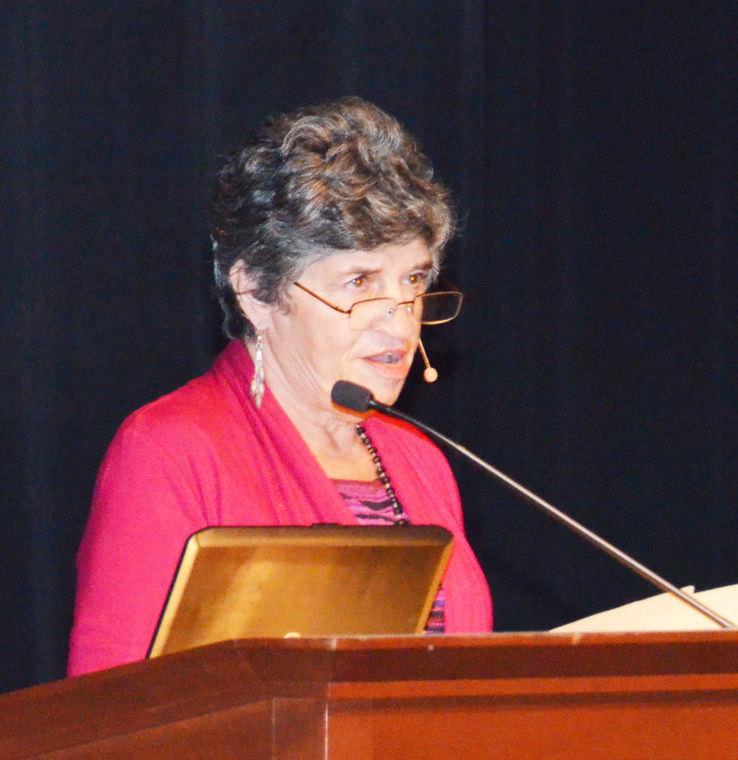
Sonja DuBois, a Holocaust survivor, talks about her life as a “hidden child” given to foster parents at a young age and unknowingly assuming a new identity to avoid Nazi persecution.
Now 75, DuBois was less than 2 years old when her parents were deported from her native town of Rotterdam, Holland, ultimately bound for the Auschwitz concentration camp, where they were killed in 1942. Both were only 29 years old.
At the train station, her birth parents gave her to a young painter friend to protect. She was taken in by a non-Jewish couple unable to have children of their own and raised as a Gentile.
The family moved three times to prevent others from discovering that DuBois had been born to Jewish parents.
“When things got too hot and people started asking questions we couldn’t answer or wouldn’t answer, we moved,” she said. “Mom and Pop tried to make life as normal as possible for me.”
In 1952, DuBois was 12 years old when her foster parents prepared to immigrate to the U.S. It was then that she learned that she had two sets of parents, and had been born Clara Van Thijn.
It would take many more years, however, for DuBois to learn her parents’ fate at Auschwitz and other details about them.
“It wasn’t until last year that I found out what happened that fateful, awful day in July 1942, when my parents left me behind, a 22-month-old little girl, who lost her identity and has searched for it all her life,” she said, repeating questions she’s often asked herself, like, “‘Who am I? Where do I belong? How did this all happen? How did they feel that I had a chance to live?'”
Now living in Knoxville, DuBois works to educate others about the thousands of Jewish children who would become “hidden children survivors” by physically hiding or assuming new identities to escape Nazi persecution.
Originally published HERE.
